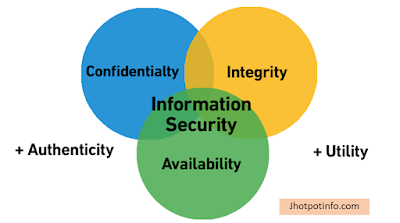A study of developing security policies to ensure the protection of your University information from unauthorized access, loss or damage while supporting the information sharing needs of the University. He we will develop Information security policies including all the components to make the policy to work effectively.
Best practices for drafting the policies are as follows:-
1) Information and data classification - Data classification is generally outlined because the method of organizing information by relevant classes in order that it's going to be used and guarded a lot of with efficiency. On a basic level, the classification method makes information easier to find and retrieve. data classification is of explicit importance once it involves risk management, compliance, and data security.
Data classification involves tagging information to form it simply searchable and traceable. It additionally eliminates multiple duplications of information, which might cut back storage and backup prices whereas rushing up the search method. although the classification method could sound extremely technical, it's a subject that ought to be understood by your organization’s leadership.
2) IT operations and administration - IT operations is that the overarching term for the processes ANd services administered by an organization's data technology (IT) department. As such, IT operations embrace body processes with support for hardware and software system. vital roles of the IT operations team embrace technical school management, quality assurance, infrastructure management and confirmation that finished product meet all the customer's desires and expectations. IT operations support each internal and external purchasers.
3) Security incident response plan - A cybersecurity incident response arrange (or IR plan) could be a set of directions designed to assist firms inure, detect, respond to, and endure network security incidents. Most IR plans ar technology-centric and address problems like malware detection, information thievery and repair outages.
4) SaaS and cloud policy - Software-as-a-service (SaaS) is an on-demand, cloud-based software package delivery model that allows organizations to purchase the applications they have while not hosting them in house. SaaS is one in all many classes of cloud subscription services, together with platform-as-a-service and infrastructure-as-a-service. SaaS has become {increasingly|progressively|more and more} common as a result of it saves organizations from wanting to purchase servers and alternative infrastructure or maintain an in-house support workers. Instead, a SaaS supplier hosts and provides SaaS security and maintenance to their software package. Some well-known SaaS applications embody Microsoft workplace 365, Salesforce.com, Cisco Webex, Box, and Adobe artistic Cloud. Most enterprise software package vendors additionally supply cloud versions of their applications, like Oracle Financials Cloud.
5) Acceptable use policies (AUPs) - An acceptable use policy (AUP) could be a document stipulating constraints and practices that a user should conform to for access to a company network or the web. several businesses and academic facilities need that workers or students sign an appropriate use policy before being granted a network ID.
6) Identity and access management (IAM) - identity and access management, could be a framework of policies and technologies to confirm that the proper users have the suitable access to technology resources. IdM systems represent the overarching umbrellas of IT security and information management
7) Data security policy - A data security policy addresses such topics as encryption, positive identification protection and access management. However, the goal isn't restricted to describing security measures; a knowledge security policy conjointly works to indicate the company’s commitment to meeting compliance needs. particularly, the policy has to define structure measures for safeguarding sensitive and demanding information, like personal info. The policy conjointly has to explain the roles and functions within the information protection method, like the responsibilities of the info protection officer (DPO) for GDPR compliance.
8) Privacy regulations - The Privacy regulations protects all "individually acknowledgeable health information" control or transmitted by a lined entity or its business associate, in any kind or media, whether or not electronic, paper, or oral. The Privacy Rule calls this info "protected health info (PHI)."
9) Personal and mobile devices - A personal mobile device may be a device that's each moveable and capable of aggregation, storing, transmittal or process electronic information or pictures. Examples embrace laptops or pill PCs, personal digital assistants (PDAs), and “smart” phones like Blackberrys
10) Remote access policy - Remote access policy may be a document that outlines and defines acceptable ways of remotely connecting to the inner network. it's essential in massive organization wherever networks square measure geographically distributed and extend into insecure network locations like public networks or unmanaged home networks.


I located one reliable example of this fact through this blog website. I am mosting likely to use such information now. IT security
ردحذف